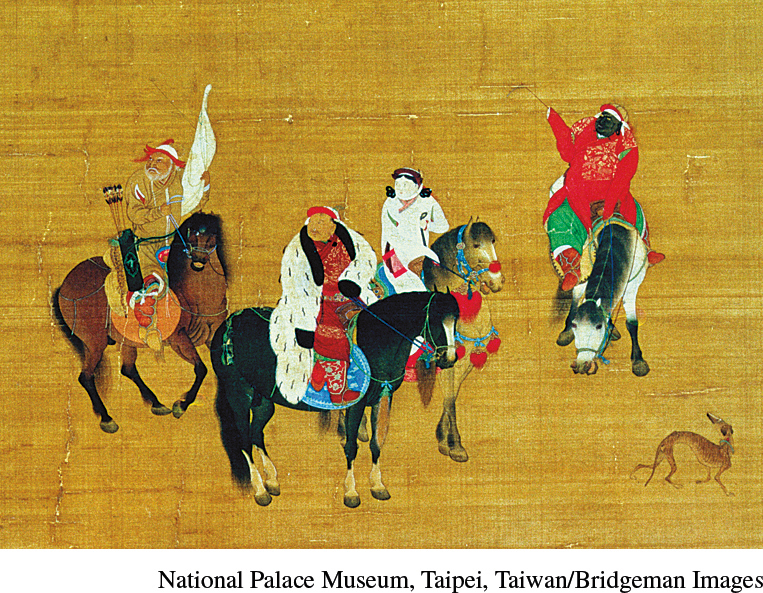Khutulun, a Mongol Wrestler Princess

Born around 1260 into the extended family network of Chinggis Khan, Khutulun was the only girl among fourteen brothers.21 Even among elite Mongol women, many of whom played important roles in public life, Khutulun was unique. Her father, Qaidu Khan, was the Mongol ruler of Central Asia and a bitter opponent of Khubilai Khan, the Mongol ruler of China who was trying to extend his control over Central Asia. A large and well-
It was when she became of marriageable age that trouble began. She turned down the possibility of marrying a cousin who governed Mongol Persia, for this woman of the steppes had no desire to live as a secluded urban wife. In fact, she declared that she would only marry someone who could defeat her in wrestling. Many suitors tried, wagering 10, 100, or in one case 1,000 horses that they could defeat her. All of them failed, and, in the process, Khutulun accumulated a very substantial herd of horses.
Khutulun’s extraordinary public life and her unwillingness to marry provided an opening for her enemies. Rumors circulated that she refused to marry because she was engaged in an incestuous relationship with her father. To put an end to such stories, Khutulun finally agreed to wed one of her father’s followers without any wrestling contest. Still, the decision was hers. As the Mongol chronicles put it, “She chose him herself for her husband.”
Even after her marriage, Khutulun continued to campaign with Qaidu Khan, and together they protected the steppe lands of Central Asia from incorporation into Mongol-
In her public and military life and in her fierce independence about marriage, Khutulun reflected the relative freedom and influence of Mongol women, particularly of the elite class. In her preference for the open life of the steppes and in her resistance to the intrusion of Mongol-
Question: What does the life of Khutulun reveal about Mongol gender relationships?